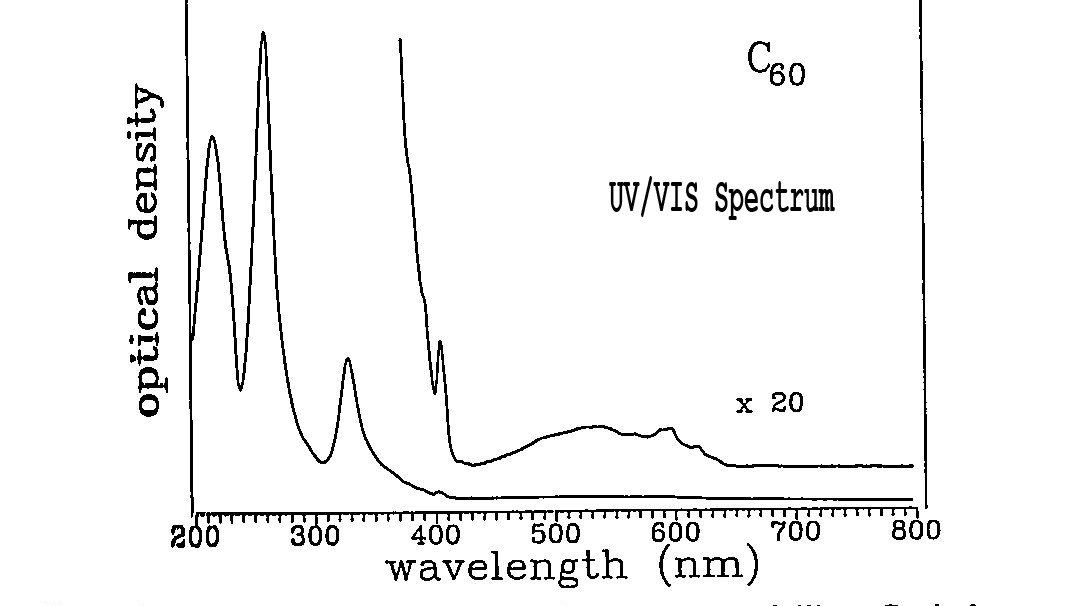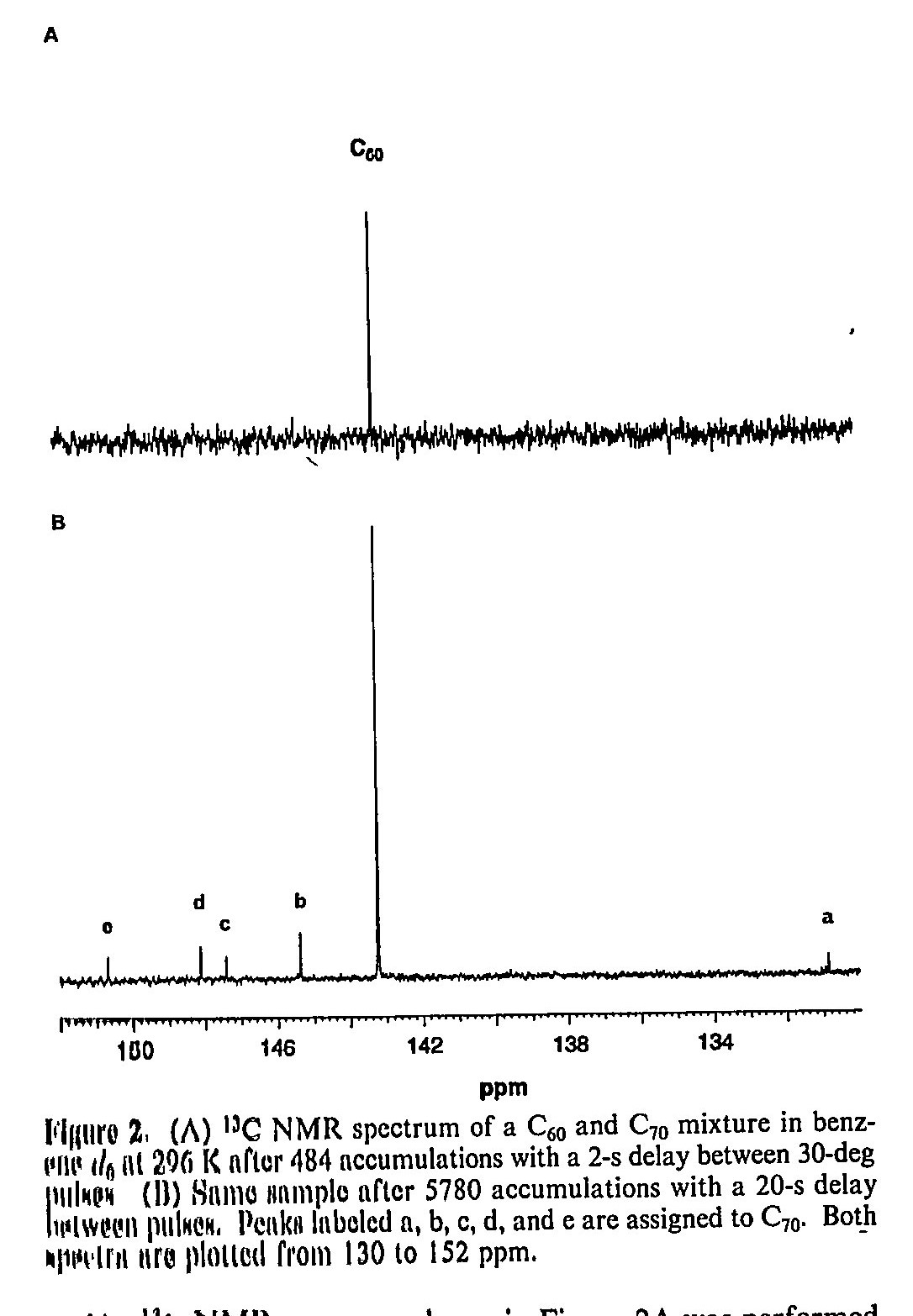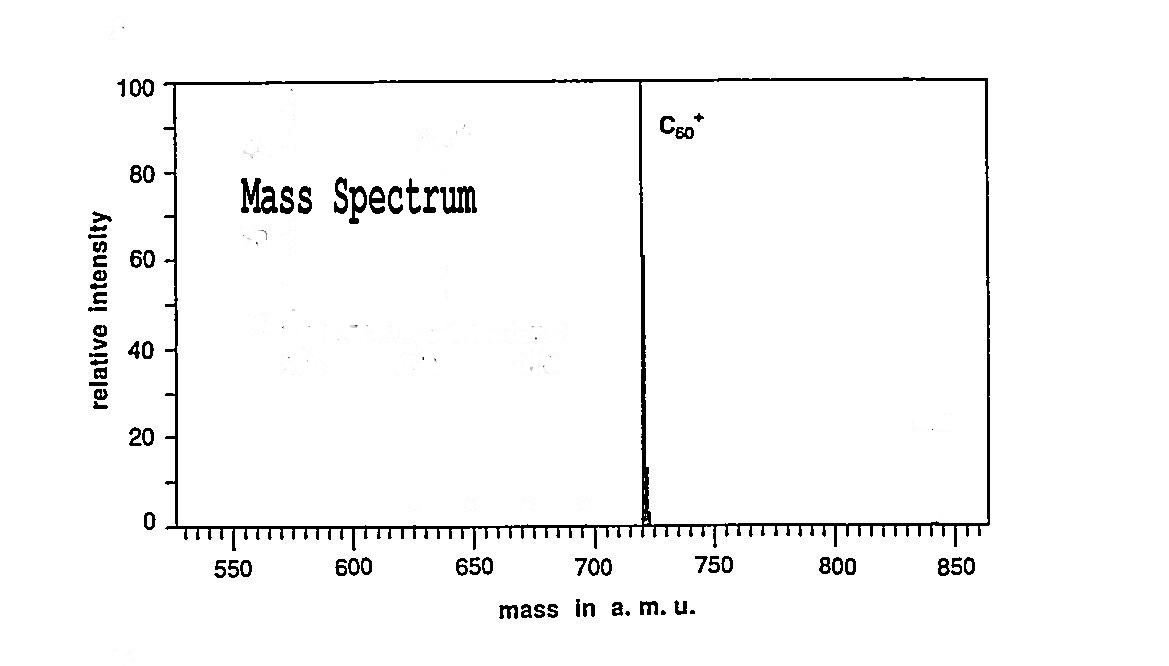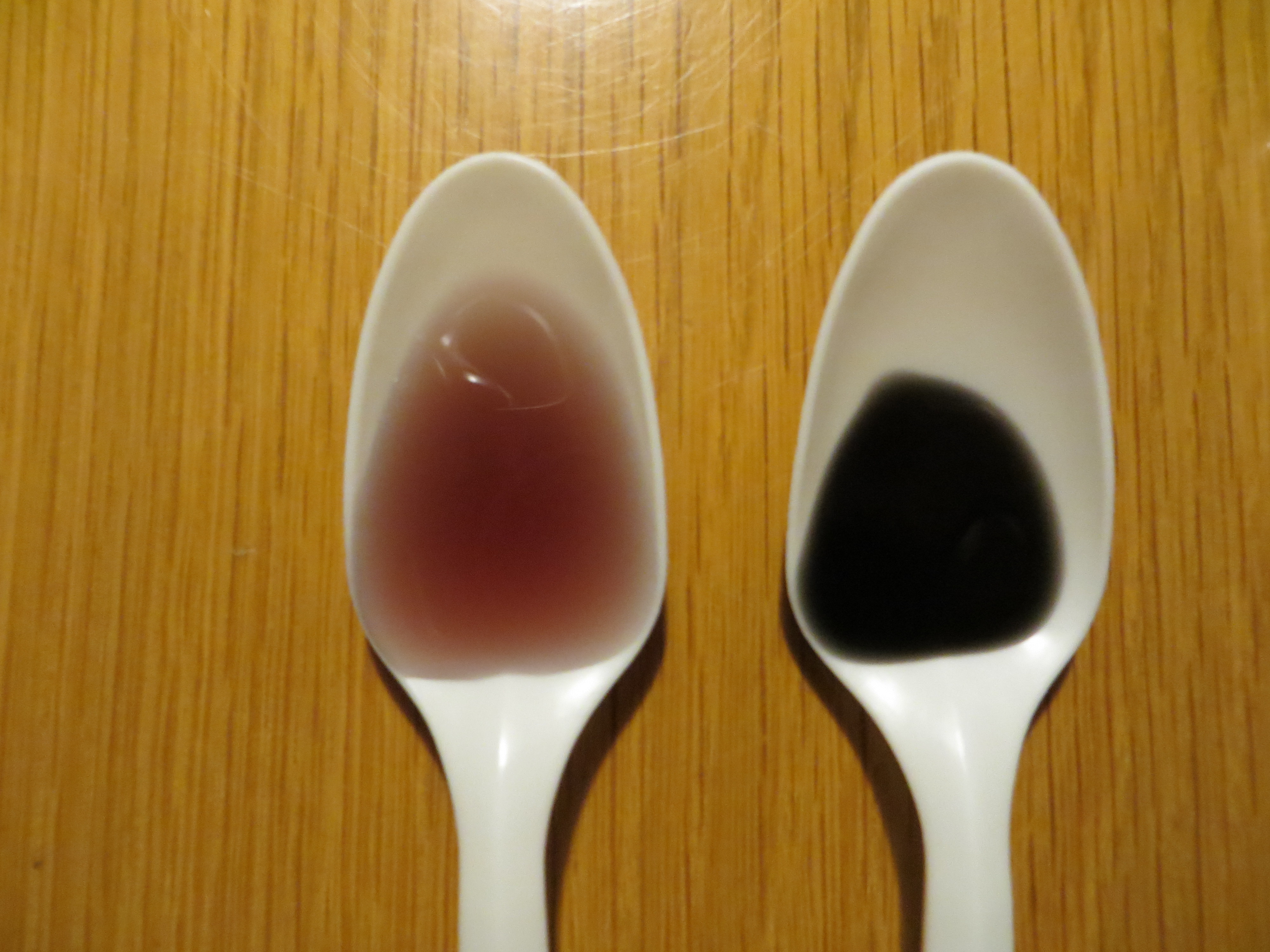C60Star Products: How does real C60 in solution look like?
Pure crystallized C60, since its discovery in 1986, has been described as a dark grayish or black powder.
This powder has been well characterized with all methods and techniques available to chemists to determine the molecular structure of it. Examples are mass spectroscopy (MS), ultra-violet/visible light spectroscopy (UV/VIS), Infrared spectroscopy (IR), Carbon-13 nuclear magnetic resonance spectroscopy (13C-NMR), Raman spectroscopy, and X-ray spectroscopy.
Here are a few example to illustrate what has been established as proof of the C60 structure: From top to bottom:UV/VIS , 13C-NMR (also showing C70 in a mixed sample) and Mass Spectra (showing the atomic mass peak at 720 accounting for 60 Carbon atom with an atomic weight of 12)



Since these early days it has been noted that C60 dissolves in certain organic solvents, e.g. toluene and benzene. Since toluene is a colorless solvent, the resulting solution has a deep purple color and is transparent which means you can see through the solution despite its purple color (transparent does not mean colorless!).
This purple color is the result of the light absorption characteristics of C60 in the UV/VIS range. Three broad peaks in the UV range at 216, 264, and 339 nm dominate the spectra. Weaker bands show up in the visible range with a plateau between 460 and 500 nm and a small peak near 625 nm (see above).
If we now take...

...a colorless or only slightly colored vegetable oil (i.e. avocado or sunflower oil) as a solvent, we produce a C60 solution with the same characteristics: purple color and transparent. That is exactly what our products looks like (see left spoon in picture above, compared to another product (Carbon-60 (TM)) on the market claiming to contain C60 but is a black dispersion). Click here for more details.
C60 dissolved in Olive oil, appears as amber due to the stronger coloration of olive oil, but it is transparent as well.
Please be aware: There are fraudulent or fake C60 products on the market (Click here)
Any product claiming to contain C60 but does NOT show the characteristics described above (i.e. content is a black heterogeneous mixture instead of purple and transparent) is not trustworthy. .
If someone claims to have found a new way to produce C60, then this substance needs to be subjected to at least some of the various spectroscopic methods listed above in order to be validated as C60. If these spectroscopic data can not be delivered, the substance is NOT C60.
Furthermore, if producers of a black product elaborate on the benefits of C60 based on peer reviewed scientific studies, all done with purple/amber C60 (!), then claiming to have a better (black) product, without having one single study done nor showing any spectroscopic data to proof its structure is hypocritical and irresponsible from a scientific point of view. None of the many scientific studies done with C60 describe the dissolved raw material as a black heterogeneous dispersion, nor as C60 hardwood charcoal.
